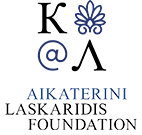Art and antiquities (4900 Subjects)
Ruins of a square building at the ancient walls of Lefkada.
The Roman Theater of Nicopolis, in Epirus.
Ruins of the polygonal walls of the Acropolis on Aetos Hill, on Ithaca.
Ruins from the site of the Acropolis of Sami on Cephalonia island.
Part of ancient wall in Sami, Cephalonia
Fig. 1. Inscription from Lefkada. Fig. 2. Seat-like stone from the School of Homer (Agios Athanasios), Ithaca. Fig. 3. Capital of column found near Skala, Cephalonia. Fig. 4. Part of wall from the ruins at Aetos, Ithaca.
View of the remains of the ancient theater of Erythrae, ancient city in Asia Minor. In the background the island of Chios.
The ruins of the Temple of Hera on Samos island.
The remains of the Temple of Apollo in Didyma, ancient city of Asia Minor.
Ancient reliefs from the island of Kos. On the first (left top), Zeus, Hera and Hercules. On the second (right top), Apollo with the Muses. On the third (bottom left), Hercules with the Lion of Nemea. On the fourth (bottom right), the contest of Apollo with the Satyr Marsyas.
The ruins of the Thermae of Gaius Xenophon (Kos) at the Asclepion of Kos island.
Fig. 1. View of Bodrum (anc. Halicarnassus). In the background the Castle of Halicarnassus, also called Castle of St. Paul. Fig. 2. View of the ruins of the Temple of Ares in Bodrum (anc. Halicarnassus).
Fig. 1. Part of stele from Bodrum (anc. Halicarnassus). This stele was most probably at the site of the Mausoleum of Halicarnassus. Fig. 2. Metopes from the Mausoleum of Halicarnassus. These Metopes, on which scenes from the Amazonomachia are depicted, are some of the very few elements of the Mausoleum preserved today, because the locals used them to cover several parts of the sewer system. Inscription from the Castle of Halicarnassus, also know as Castle of Saint Paul.
View of the medieval city of Rhodes. On the right the Naillac Tower, constructed during the era of the Grand Master of the Knights Hospitaller Philibert de Naillac, and demolished in the mid-19th century.
View of Marmaris in Asia Minor. In the background the Castle of the city, constructed by the Knights Hospitaller.
Fig. 1. View of the Hellenistic, theater of Fethiye (anc. Telmessos) in Asia Minor. Fig. 2. Lycian tombs and sarcophagi at Fethiye (anc. Telmessos) in Asia Minor.
Lycian sarcophagi and mausoleums at Fethiye (anc. Telmessos) in Asia Minor.
Lycian sarcophag at Fethiye (anc. Telmessos) in Asia Minor.
Carved tombs in Fethiye (anc. Telmessos) in Asia Minor.
Fig. 1. Rock-cut mausoleum in Fethiye (anc. Telmessos) in Asia Minor. Fig. 2. Lanscape at the Gulf of Saint Paul, in Lindos (Rhodes).
View of Agia Marina, Leros. On the left the Castle of Leros, also known as Castle of Panagia, which was initially constructed by the Knights Hospitaller. In the background the Bourtzi Fortress, dating back to the Roman era.
Pompey's Pillar, also known as Triumphal pillar of Diocletian, in Alexandria, Egypt.
The Meidum or Maidum Pyramid, south of Cairo. Due to its unusual shape it is also called as False Pyramid.
The pylon of the Temple of Luxor (anc. Thebes), together with the colossal statues and the obelisk of Ramses II.
View of the great hypostele of the Temple of Amun-Re at the Precinct of Amun-Re in Karnak.
View of the Ptolemaic Temple of Kom Ombo.
View of the Temple of Dedwen, Nubian deity, at the cape of Kalabsha (anc. Talmis), near Aswan. During the first Christian centuries, this temple served as a church, and it is still called this way.
View of an Egyptian temple at Kalabsha (anc. Talmis), near Aswan.
View of the Temple of Mandulis, Nubian deity. This temple is also called Temple of Kalabsha as of its location (at Kalabsha, near Aswan).
View of the Temples of Abu Simbel in Egypt.































